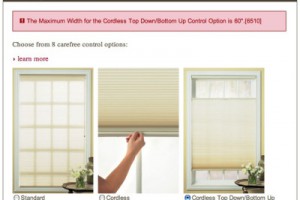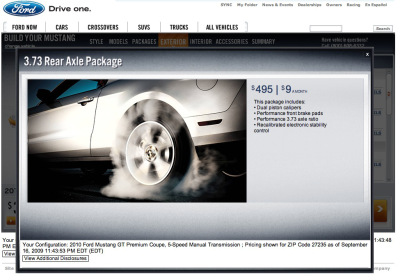When your products can be made in over 100 billion combinations

Frankly speaking,I work in the home decor industry, blinds and shades in particular. The shopping process for understanding, selecting, ordering, and installing custom blinds and shades can be daunting if it’s unclear what is available to you as a consumer. Plus, when it comes to home decor and fashion, there is a lot of emotion involved — how you furnish your home says a lot about you and your family so the last thing you want to do is make a very expensive design mistake.
More Options = Better. Right?
Not necessarily. However, the Blinds and Shades industry is an old industry rooted in differentiation by product options and colors. In an industry determined to never be outdone by its competitors, window treatment manufacturers both benefit and suffer from being able to cater to the millions of variations of window sizes in consumers’ homes to the unique decor tastes of consumers laying down their hard-earned money. The engineering and manufacturing behind the products is complex, but when it comes to presenting an ordering screen to an untrained user, it’s a whole new challenge.
Key components to a product configurator are all about usability
Usability in a product configurator means:
1.Showing options with photos or videos
2.Offering feature/benefit statements for each option
3.Categorize options into digestible steps
4.When a conflict is detected, provide messaging in plain English and in a relevant location.
Step 1: Showing options with photos or videos
One of the fundamentals. Consumers will buy what they can see. Case in point, here is a $1,530 “Track Pack” option on the Ford Mustang without pictures.
Step 2: Offering feature/benefit statements for each option
A couple years back I was looking at Ford Mustangs on Ford’s website. In the configurator, I was presented with an option of a rearend gear ratio of 3.73. I went back recently and took a screen shot of this because Ford is still doing it. What’s wrong with this picture?
I don’t know what the factory default rear axle ratio is. Being a “car guy,” I know the benefits of gearing up or gearing down, but without being able to compare this option to what’s offered by default, it’s hard to justify the $495 price tag. I have to leave the product configurator and search around on the site to see if they’ve listed the default rear axle ratio specifications somewhere.
Step 3: Categorize options into digestible steps
Oh, how it’s daunting to enter into a product configurator without an understanding of how many steps or questions there are to answer. Blinds and Shades in particular can be upwards of 25 questions just to get to a completed configuration. The tricky part is dividing the total number of questions into logical buckets or steps. Consumers do not configure products in linear fashion, particularly when comparing pricing online, changing options, and running into option conflicts. They hop around, jumping out of predefined order. It’s important to categorize questions so a consumer and quickly remember where they saw an option.
Step 4: When a conflict is detected, provide messaging in plain English and in a relevant location.
Again, Ford is on the right track by showing the conflict, but what is always difficult to decipher is the why behind conflicts like this:
What’s happened here is the 3.73 rear axle package is already included in the “Track Pack” option. In order to understand this however, I have to separately click on the “Track Pack” option and the “Rear Axle Package” option to see if I can come to my own conclusion as to why these two options cannot be ordered together.
In the case of blinds and shades, I’ve configured a Cellular Shade that is 83″ wide X 60″ tall: